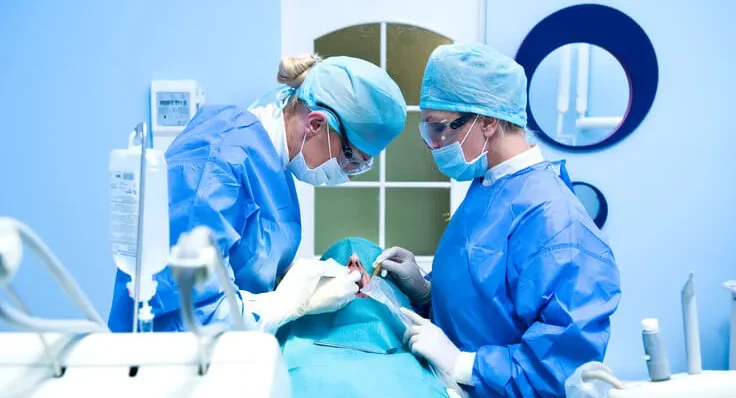The primary objective of this randomized clinical trial was to assess the effects of diode laser photobiomodulation (PBM) on post-surgical healing, inflammation, and implant stability in patients undergoing dental implant procedures. Photobiomodulation has been suggested as a potential therapeutic tool due to its non-invasive nature and ability to modulate biological processes at the cellular level. This study sought to provide empirical evidence to support the efficacy of PBM in enhancing the outcomes of dental implant surgeries.
Methods
The study involved the insertion of 40 dental implants into 13 patients. These implants were randomly allocated into two groups: the test group (PBM+) and the control group (PBM-). The PBM+ group received two sessions of photobiomodulation therapy using a combined diode laser emitting wavelengths of 630 nm and 808 nm. The first session was administered immediately after surgery, and the second session occurred seven days post-surgery. The control group, in contrast, received simulated laser treatment to serve as a placebo.
To measure the primary outcomes, several parameters were assessed. The implant stability quotient (ISQ) was recorded at four different time points: immediately after the surgical procedure, and at 7 days, 4 weeks, and 8 weeks post-surgery. ISQ is a reliable measure used to evaluate the stability of dental implants over time. Additionally, post-surgical inflammation was evaluated using criteria established by Bloemen and colleagues. Healing was assessed using the healing index (HI), which ranges from 1 to 5, with 5 indicating optimal healing.
Results
The study found no statistically significant differences in the mean ISQ values between the test and control groups across the various time points. This suggests that PBM did not have a measurable impact on implant stability during the study period. However, when it came to healing outcomes, a notable difference was observed. In the control group (PBM-), only two implants (18.2%) achieved the maximum healing index (HI = 5). In contrast, in the test group (PBM+), nine implants (45%) reached this optimal healing score. The difference was statistically significant, with a P-value of less than 0.0001, indicating a strong correlation between PBM treatment and improved healing.
Furthermore, the study used logistic regression analysis to examine the likelihood of inflammation in the PBM- group compared to the PBM+ group. The analysis revealed that the absence of laser therapy in the PBM- group was associated with a 4.333 times higher odds ratio (OR) of developing post-surgical inflammation (95% confidence interval: 1.150-16.323; P = 0.030). This finding highlights the potential anti-inflammatory benefits of PBM, particularly in the critical early stages of post-surgical recovery.
Conclusions
The findings of this study suggest that the application of photobiomodulation using an 808 nm infra-red laser for bone tissue and a 630 nm laser for mucosal tissue, administered in two sessions, is an effective method for reducing post-surgical inflammation and promoting early healing in patients undergoing dental implant surgery. Although PBM did not demonstrate a significant effect on implant stability within the observed timeframe, its impact on healing and inflammation reduction was clear and clinically relevant.
The study’s results contribute to a growing body of evidence supporting the use of PBM as an adjunctive treatment in dental surgery. However, the authors acknowledge the need for further research to confirm these findings and to explore the long-term effects of PBM on implant stability and overall treatment outcomes. Larger, multicenter studies with longer follow-up periods could provide more definitive conclusions and help to refine clinical protocols for the use of PBM in dental implantology.
In summary, while photobiomodulation may not influence the immediate stability of dental implants, it shows promise in enhancing post-surgical healing and reducing inflammation, which are critical factors in the success of implant procedures. As the field of dental surgery continues to evolve, PBM could become an integral part of post-operative care, improving patient outcomes and overall satisfaction.
Source: Pubmed

